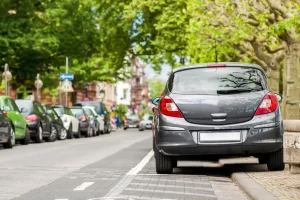Oil and Gas Industry Coverage Options

Oil and Gas Industry Coverage Options
According to the Bureau of Labor Statistics nearly 500,000 workers are currently employed in the oil and gas extraction industry in the United States, and that number is on the rise as the world’s demand for energy continues to grow. This increase means more risks for well operators as they struggle to keep up with demand. Fortunately, there are many types of coverages available to those in the oil and gas industry to help mitigate these risks.
What Kinds of Risks Does the Extraction Industry Face?
Risks in the oil and gas industry can be split into three categories:
Environmental
Equipment and property
Worker health and safety
Environmental risks are the most far-reaching risks faced by the oil and gas industry. Major oil spills, gas emissions and other contaminations are well-documented and are considered to be part of doing business.
Equipment risks include malfunctions and downtime, which lower the profitability of the operation. Preventive and predictive maintenance are key for combating these risks.
Property risks include lost or damaged drills or wells and damage to equipment during transportation. Additionally, fleet risks, such as fuel costs, rollovers and spills, need to be addressed by employers.
Finally, worker health and safety is a big concern because of the dangerous nature of the industry; the fatality rate for oil and gas workers is seven times the national average for all workers. Providing the proper training and safety measures for workers as the industry continues to expand will be important for employers to remain profitable.
What are Your Coverage Options?
There is a host of coverage options available to those in the oil and gas industry. Typical commercial general liability (CGL), protection and indemnity (P&I), marine employer’s liability (MEL) and hull insurance policies are likely not sufficient to cover many of the risks the industry faces:
Environmental Coverage Options
Pollution insurance is a necessary coverage because CGL policies typically exclude pollution events. Under the terms of pollution coverage, the incident that leads to an environmental loss must be “sudden and accidental” and must be detected within a certain timeframe. This coverage generally does not pay for cleanup costs. Specific pollution insurance coverages often cover operators from gradual environmental incidents; coverages include:
Pollution legal liability (PLL) or environmental impairment liability (EIL), which are site-specific coverages written on a claims-made basis. Incidents that are gradual in nature and take a long time to discover, such as a small pipeline leak, may trigger a claim. If an operator knows the exact point at which the incident occurred, it is usually not covered under a PLL/EIL policy.
Contractors pollution liability (CPL) insurance, which covers oil and gas contractors against claims from third-party bodily injury, property damage, cleanup costs and/or environmental damage due to their work on a worksite.
Storage tank liability (STL), which covers damage from leaking storage tanks, whether they are above- or below-ground.
Equipment and Property Coverage Options
Control of well insurance (also may be known as operators extra expense (OEE)), which covers expenses incurred in regaining control of a well after cratering or blowout. Additionally, endorsements may be added to this policy to cover pollution, equipment malfunction (such as casing damage), evacuation costs and damage to the property as a result of the cratering or blowout.
Oil lease property (OLP) coverage, which covers a loss or damage to petroleum storage tanks at scheduled locations.
Riggers legal liability coverage, which insures oil contractors when handling a worksite’s equipment. For example, this coverage would cover damage to a wellhead during installation by a contractor. A standard CGL policy would not cover such an event.
Rig and equipment physical damage coverages, which will protect much of the equipment used on a worksite from theft, breakdown and weather events, such as hurricanes and tornadoes. These coverages are often written with business interruption coverage, which replaces income lost due to a loss of production. Specific types of physical damage coverage include the following:
Onshore production property damage
Offshore platform and pipeline damage
Onshore and offshore construction
Drilling rig physical damage
Terrorism
Marine cargo insurance and hull physical damage
Worker Health and Safety Coverage Options
Workers in the oil and gas extraction industry face many more health hazards than the average worker, so it’s important that employers have robust workers’ compensation and return to work programs to keep workers safe and healthy. In addition to these programs, providing worker training and implementing various safety measures will minimize the number of days your employees are away from work.
Training should focus on the following oil and gas safety hazards:
Struck-by/caught-in incidents
Falls
Explosions and fires
Confined spaces
Ergonomic issues
Machine hazards
Hot work
Training should also focus on the following health hazards:
Hydrogen sulfide
Silica
Noise
Diesel particulate matter
Hazardous materials
Fatigue
Extreme temperatures
Remember that you must provide the proper personal protection equipment (PPE) for the job.
When employing contractors to work at your site, it is important to make sure both parties are fully insured. Carefully scrutinize all contracts and joint operating agreements. If a joint operating agreement requires each party to carry $1 million coverage, agree to split the amount if the claim is in excess of $1 million.
Additional Coverage Options
Umbrella liability will cover excess costs over the policy limit associated with a claim. This type of coverage has become more restrictive in the past decade.
Professional liability is important for the development of a drilling site, including exploration, well design, testing and decommissioning. This coverage will pay for bodily injury and property damage, along with pollution incidents arising from these professional services.
Inland marine coverage covers onshore activities associated with running an operation, including transportation of equipment and other moveable parts. Similarly, ocean marine coverage will pay for damage and losses due to transportation of equipment via sea vessel.
Contact INSURICA today to learn more about your oil and gas coverage options.



